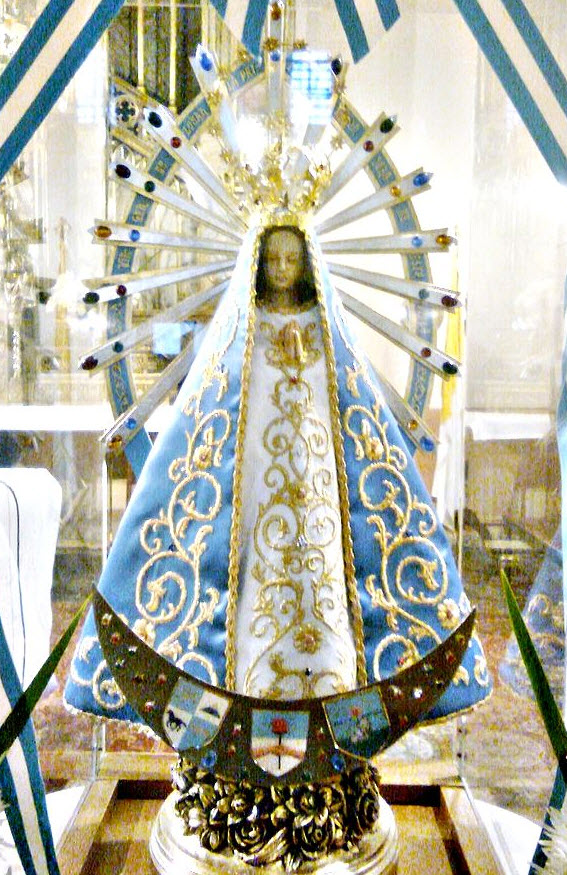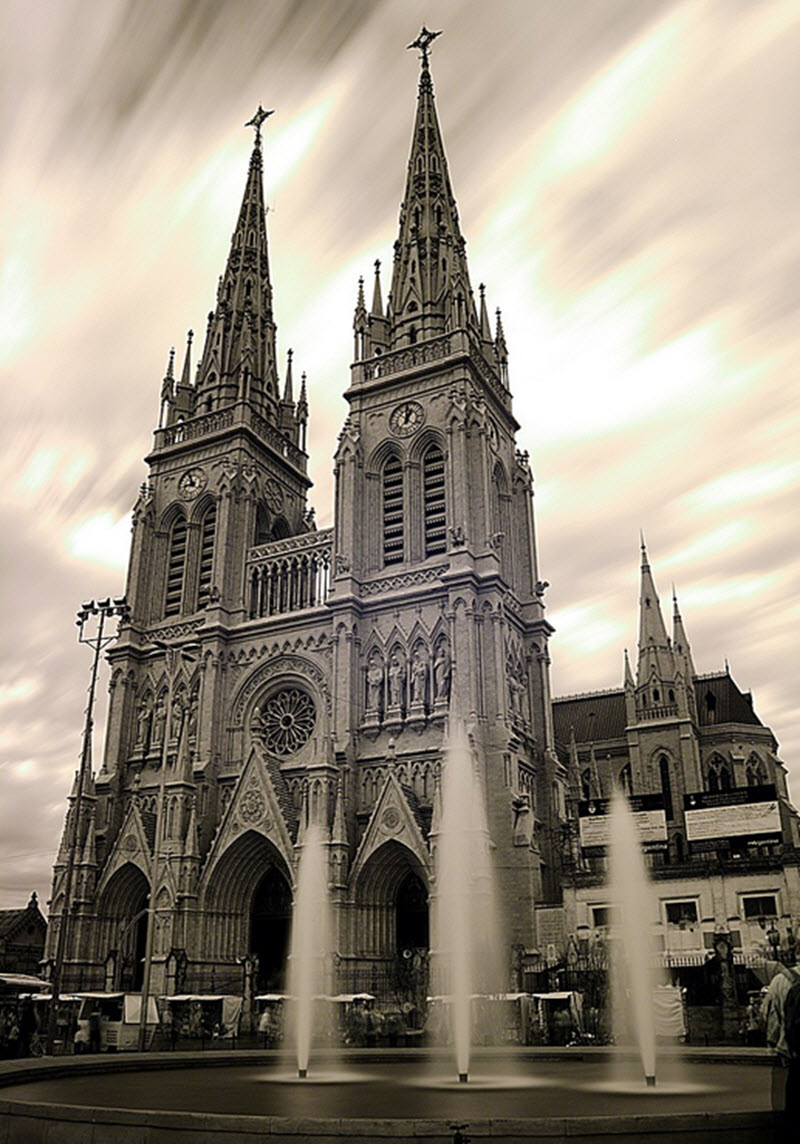Nuestra Señora de Luján is the patron saint of Argentina. In the Basilica of Luján, located roughly 68 kilometres north-west of the capital, the celebrated 16th-century statue of the Virgin Mary called Nuestra Señora de Luján has been kept for centuries, and is commonly referred to as Virgen de Luján. The statue is small, only 38 cm tall.
On 8 September, 1930, Pope Pius XI formally declared Nuestra Señora de Luján the patron saint of Argentina, Paraguay and Uruguay.
In English, the patron saint of Argentina is known as Our Lady of Luján and the Virgin of Luján.

Feast Day
The feast day of Nuestra Señora de Luján is May 8, when she is celebrated throughout Argentina and especially in the city of Luján where the statue and basilica is.
Visiting Luján
The city Luján is located in the Buenos Aires province, roughly 68 km north-west of the capital. It is easy to reach from Buenos Aires by public transport; both bus and railway.
Luján is a popular destination for visitors, both domestic and foreign. In an average year, over 6 million Catholics make a pilgrimage to the Basilica, and some of them walk the whole way from Buenos Aires. The city is known in Argentina as “La Capital de la Fe”, which means the capital of the faith.
In addition the shrine, the city is also home to the Enrique Udaondo museum where visitors can enjoy housing exhibitions showcasing colonial life. The museum complex includes both the old town hall and the old residence of the Viceroy. Also on display are the prison cells where both Colonel William Carr Beresford and General Cornelio Saavedra were imprisoned. The Colonel was the commander of the 1806 British invading forces, while the General is chiefly known for his fight for Argentina´s independence from Spain and for being appointed president of the Primera Junta.
Background
The statue is not of Argentinian origin; it was created in Brazil and sent to Argentina. According to catholic tradition, a Catholic settler in what is today known as Argentina ordered a terracotta image of the Immaculate Conception in 1630 because he hoped to reinvigorate the Catholic faith in Santiago del Estero by creating a shrine there for the Holy Virgin.
The statue arrived from Brazil to Buenos Aires without problem, and was placed in a caravan to make the final part of its journey by land. The caravan took a break at the home of Don Rosendo Oramas, located in what is today called Zelaya. When it was time to leave, the oxen refused to move. When the crate with the Holy Virgin statue was removed from the cart, the oxen started moving again.
This was interpreted as a sign – the statue should remain at this place and not be taken to Santiago del Estero. For 40 years, the statue remained in place and was venerated in a simple chapel. Then, it was acquired by Ana de Matos and moved to Luján, where it remains to this day. Instead of being in a humble chapel, it is nowadays kept in a basilica built in 1890-1937.
Basílica Menor de Nuestra Señora de Luján

The statue is kept in Basílica Menor de Nuestra Señora de Luján (Minor Basilica of Our Lady of Luján).
The Basilica, which was built in 1890-1937, is Luján´s most prominent landmark, with its impressive neo-gothic architecture and two 106 m tall copper-roofed towers that can be seen from far away due to the flat landscape surrounding the Basilica. The building was designed by the French architect Ulderico Courtois.
The Basilica is sometimes erroneously referred to as a cathedral, but the actual cathedral for the Archdiocese of Mercedes-Luján is located in the city Mercedes.
Canonical coronation of Our Lady of Luján
In 1886, Pope Leo XIII decided to honour the statue with a Canonical Coronation. For this purpose, he blessed a golden crown adorned with a number of enamels depicting the emblems of the Archbishop and the Argentine Republic. The crown was also decorated with 365 diamonds, rubies, emeralds and sapphires, plus 132 pearls. The Canonical Coronation of Our Lady of Luján took place on her feast day (May 8) in 1887.
Pope John Paul II
Several popes have honoured Nuestra Señora de Luján in various ways, but only one has actually visited her shrine while being the pope, and that was John Paul II. The 1982, during the Falklands War, John Paul II became the first pope to visit Nuestra Señora de Luján. As a part of this visit, he bestowed upon her the Golden Rose; a golden rose stem with flowers, buds and leaves placed in a silver vase bearing the Papal shield. The tradition of the Pope gifting such roses is nearly a thousand years old. The Golden Rose is blessed by the pope on the fourth Sunday of Lent, anointed with Holy Chrism, and dusted with incense.
